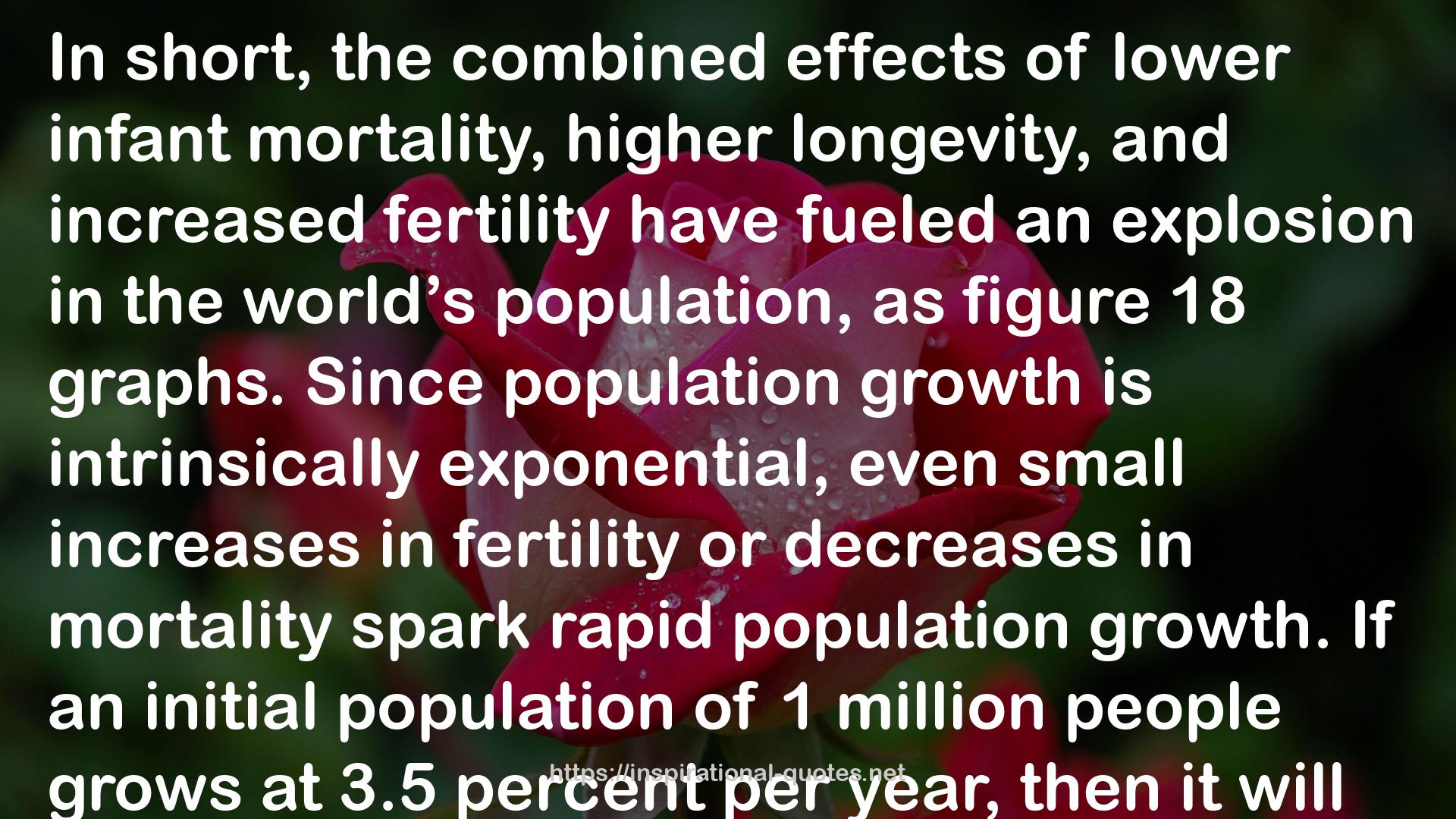" In short, the combined effects of lower infant mortality, higher longevity, and increased fertility have fueled an explosion in the world’s population, as figure 18 graphs. Since population growth is intrinsically exponential, even small increases in fertility or decreases in mortality spark rapid population growth. If an initial population of 1 million people grows at 3.5 percent per year, then it will roughly double every generation, growing to 2 million in twenty years, 4 million in forty years, and so on, reaching 32 million in a hundred years. In actual fact, the global growth rate peaked in 1963 at 2.2 percent per year and has since declined to about 1.1 percent per year,60 which translates into a doubling rate of every sixty-four years. In the fifty years between 1960 and 2010, the world’s population more than doubled, from 3 to 6.9 billion people. At current rates of growth, we can expect 14 billion people at the end of this century. FIGURE 21. The demographic transition model. Following economic development, death rates tend to fall before birth rates decrease, resulting in an initial population boom that eventually levels off. This controversial model, however, only applies to some countries. One major by-product of population growth plus the concentration of wealth in cities has been a shift to more urbanization. In 1800, only 25 million people lived in cities, about 3 percent of the world’s population. In 2010, about 3.3 billion people, half the world’s population, are city dwellers. "
― Daniel E. Lieberman , The Story of the Human Body: Evolution, Health, and Disease
